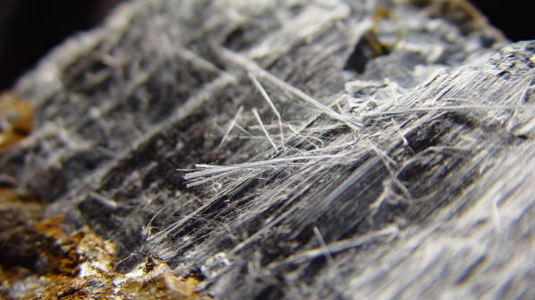Is Your Home Putting Your Health at Risk? The Shocking Truth About Asbestos Dangers!
By
Gian T
- Replies 0
As we age, our homes do too, and with that aging comes a host of potential risks that many of us may not even be aware of. One such risk, which is particularly prevalent in Australian homes built or renovated between 1945 and 1990, is the presence of asbestos. This once widely-used building material is now known to be a silent killer, and as it deteriorates with time, the dangers it poses only become more acute.
The story of Victorian car mechanic Graeme Hamilton is a stark reminder of the hidden dangers that may lurk within the walls of our cherished homes. Nearly four decades ago, Hamilton, like many Australians, unknowingly exposed himself and his family to asbestos during a home renovation. The consequences of that exposure have only become apparent in recent years, as Hamilton now suffers from lung problems and is under the care of a thoracic surgeon.
Asbestos was once hailed as a miracle material for its durability and fire-resistant properties. Australia, in particular, embraced its use, importing 1.5 million tonnes of asbestos between 1930 and 1983. It was incorporated into over 3,000 building products, making it a common feature in Australian homes. However, the revelation of its carcinogenic nature led to a gradual reduction in its use, culminating in a complete ban in 2003. However, the legacy of asbestos remains, with around a third of Australian houses still containing this hazardous material.
The danger of asbestos lies in its fibrous nature. When materials containing asbestos break down, they release fine fibres that can be inhaled and become lodged in the respiratory tract. Over time, this can lead to serious health conditions such as asbestosis, lung cancer, or mesothelioma—a grim reality that Hamilton has witnessed among his peers and fears for his own family.
Asbestos Awareness Week serves as a crucial reminder of the ongoing risks associated with asbestos in our homes. The CEO of the Asbestos and Silica Safety and Eradication Agency, Jodie Deakes, has issued an urgent warning to homeowners, particularly those considering renovations or DIY projects. The agency emphasises that asbestos can be found in various parts of the home, including floors, walls, ceilings, and even roofs, which are especially vulnerable due to direct exposure to the elements.
The aging of asbestos-containing materials means they are more likely to deteriorate and release fibres. This is why it's imperative for homeowners to have their homes professionally tested for asbestos before undertaking any work. Knowing where asbestos is located allows for proper planning and safe removal, ensuring that families are protected from exposure.
For those living in homes built before 1990, the message is clear: the risk of asbestos is real and present. While regulatory changes, such as mandated asbestos reports during house sales, are steps in the right direction, the responsibility ultimately falls on homeowners to be proactive in safeguarding their health and that of their loved ones.
If you suspect your home may contain asbestos, it's crucial to avoid disturbing it and seek professional advice. Asbestos removal is not a DIY job; it requires specialised skills and equipment to ensure it's done safely and effectively.
 We urge our members to take this issue seriously at the Seniors Discount Club. Your home should be your sanctuary, not a source of health risks. Share your experiences with us—have you had your home tested for asbestos or gone through the removal process? Your stories could help inform and protect others in our community. Let's work together to ensure our golden years are spent in safe and healthy environments.
We urge our members to take this issue seriously at the Seniors Discount Club. Your home should be your sanctuary, not a source of health risks. Share your experiences with us—have you had your home tested for asbestos or gone through the removal process? Your stories could help inform and protect others in our community. Let's work together to ensure our golden years are spent in safe and healthy environments.
The story of Victorian car mechanic Graeme Hamilton is a stark reminder of the hidden dangers that may lurk within the walls of our cherished homes. Nearly four decades ago, Hamilton, like many Australians, unknowingly exposed himself and his family to asbestos during a home renovation. The consequences of that exposure have only become apparent in recent years, as Hamilton now suffers from lung problems and is under the care of a thoracic surgeon.
Asbestos was once hailed as a miracle material for its durability and fire-resistant properties. Australia, in particular, embraced its use, importing 1.5 million tonnes of asbestos between 1930 and 1983. It was incorporated into over 3,000 building products, making it a common feature in Australian homes. However, the revelation of its carcinogenic nature led to a gradual reduction in its use, culminating in a complete ban in 2003. However, the legacy of asbestos remains, with around a third of Australian houses still containing this hazardous material.
The danger of asbestos lies in its fibrous nature. When materials containing asbestos break down, they release fine fibres that can be inhaled and become lodged in the respiratory tract. Over time, this can lead to serious health conditions such as asbestosis, lung cancer, or mesothelioma—a grim reality that Hamilton has witnessed among his peers and fears for his own family.
Asbestos Awareness Week serves as a crucial reminder of the ongoing risks associated with asbestos in our homes. The CEO of the Asbestos and Silica Safety and Eradication Agency, Jodie Deakes, has issued an urgent warning to homeowners, particularly those considering renovations or DIY projects. The agency emphasises that asbestos can be found in various parts of the home, including floors, walls, ceilings, and even roofs, which are especially vulnerable due to direct exposure to the elements.
The aging of asbestos-containing materials means they are more likely to deteriorate and release fibres. This is why it's imperative for homeowners to have their homes professionally tested for asbestos before undertaking any work. Knowing where asbestos is located allows for proper planning and safe removal, ensuring that families are protected from exposure.
For those living in homes built before 1990, the message is clear: the risk of asbestos is real and present. While regulatory changes, such as mandated asbestos reports during house sales, are steps in the right direction, the responsibility ultimately falls on homeowners to be proactive in safeguarding their health and that of their loved ones.
If you suspect your home may contain asbestos, it's crucial to avoid disturbing it and seek professional advice. Asbestos removal is not a DIY job; it requires specialised skills and equipment to ensure it's done safely and effectively.
Key Takeaways
- Victorian car mechanic Graeme Hamilton shared his experiences of unknowingly working with asbestos in the past, highlighting the dangers of asbestos exposure in both the home and workplace.
- Asbestos Awareness Week prompts experts to issue urgent warnings about the risks associated with aging and deteriorating asbestos in Australian homes, especially those built or renovated between 1945 and 1990.
- The CEO of the Asbestos and Silica Safety and Eradication Agency, Jodie Deakes, emphasised the importance of having a professional test for asbestos before undertaking any renovation or DIY projects to prevent exposure and ensure safe removal.
- Graeme Hamilton, who has developed pleural plaques due to asbestos exposure, is advocating for mandatory asbestos reports to be included in the house sales process to better inform potential buyers about the presence of asbestos in properties.









